Because we sit hunched over a computer for like 9 hours a day, muscles get tight that shouldn’t be tight. These tight muscles cause other muscles that should be active to not function correctly, which leads to compensation and injury.
These tight muscles from sitting all day at a desk must be rolled out and stretched so that they aren’t being overworked.
For some great stretches to alleviate those tight muscles from sitting all day, check out these 10 Essential Stretches For Anyone With A Desk Job.
But getting rid of those desk job aches and pains takes more than simply rolling out and stretching.
You also need to get the correct muscles activated and working.
One of the best ways to do this is with isometric exercises.
Isometric moves can do double duty – they can stretch out tight muscles while allowing you to activate the muscles that should be working but aren’t.
Below are 10 great isometric moves you need to do if you have a desk job. You can do them all together as a recovery workout or pick just a few to help you warm up. They don’t need to be done every day, but will only help you if you regularly include them in your routine.
Some can even be done at work when you need a quick break from sitting!
10 Isometric Moves To Alleviate Desk Job Aches And Pains
1. Crescent Hold with Reach – Start in a high plank position. Step one foot up between your hands with the front knee bent and the back leg out straight. Your front heel will be down while your back heel will be up. Lift your hands up off the ground and reach them back and overhead as you stay low in the lunge. Keep your front heel down as you sit back into the lunge. If your front heel is coming up, you may want to step your front foot forward a bit more. As you hold the lunge, your back heel will stay up and the back leg will stay straight. Feel a nice stretch down the front of the hip and quad of the back leg. Hold then switch to the other side.
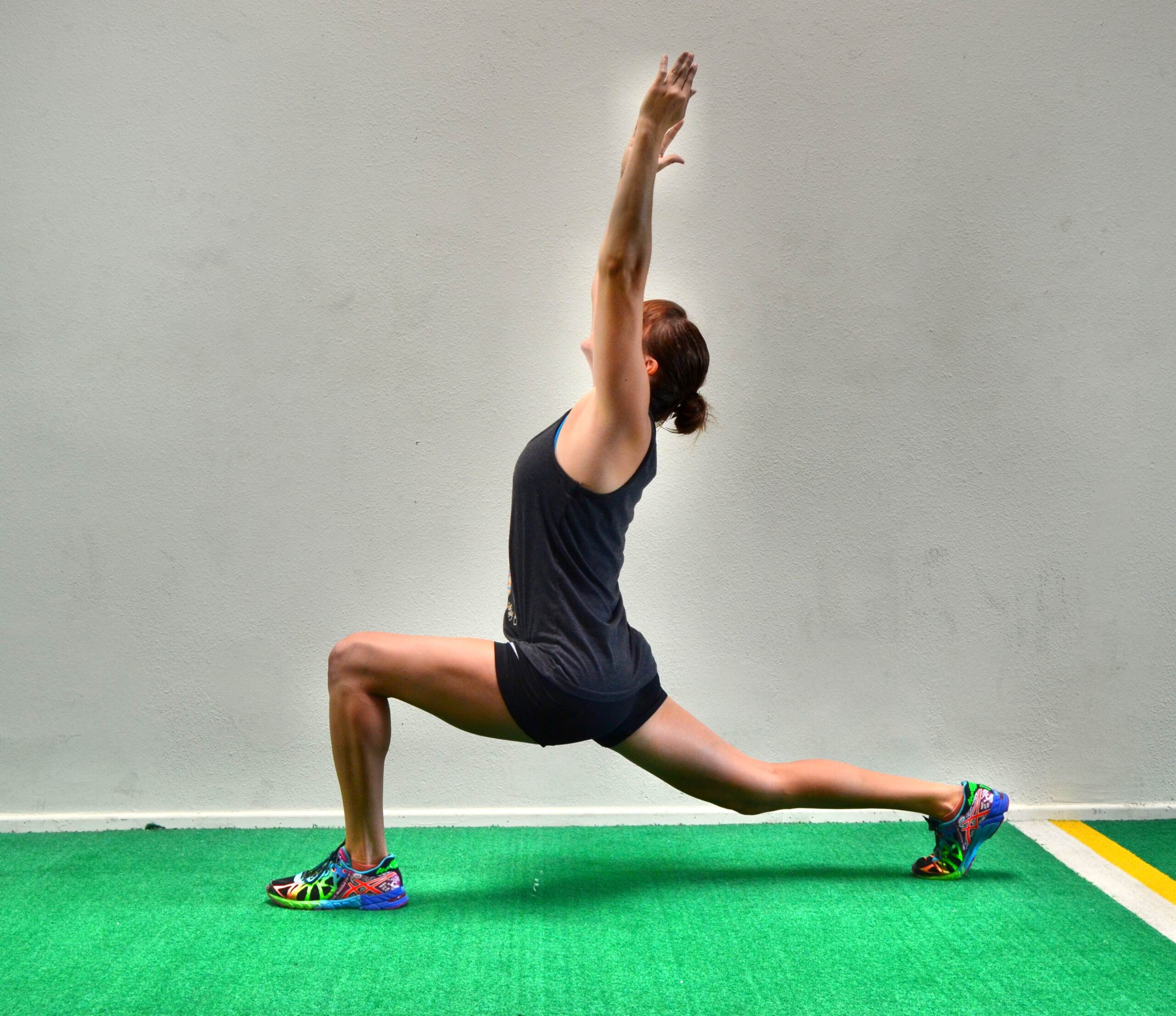
2. Warrior II Hold – Set up in a nice wide lunge stance with one foot forward and one foot back. Turn the back toe out so your feet are perpendicular. Your front foot should be at the instep of your back foot when you turn it out. Sink down into a lunge, keeping the back leg straight and the front heel firmly planted. Try to get your front knee bent to 90 degrees and your quad parallel to the ground. You may find you need to step your front foot forward a bit more to sit comfortably in the lunge and keep the front heel down. The lower you sink in the lunge, the harder the move will be. Do not let your front knee cave inward. Squeeze the glute and keep the knee in line with your hip and your ankle. While in the low lunge, open your arms out at shoulder height. Reach one forward over the front leg and the other back over the back leg. Keep the chest open and do not lean forward. Keep your weight centered in the lunge.
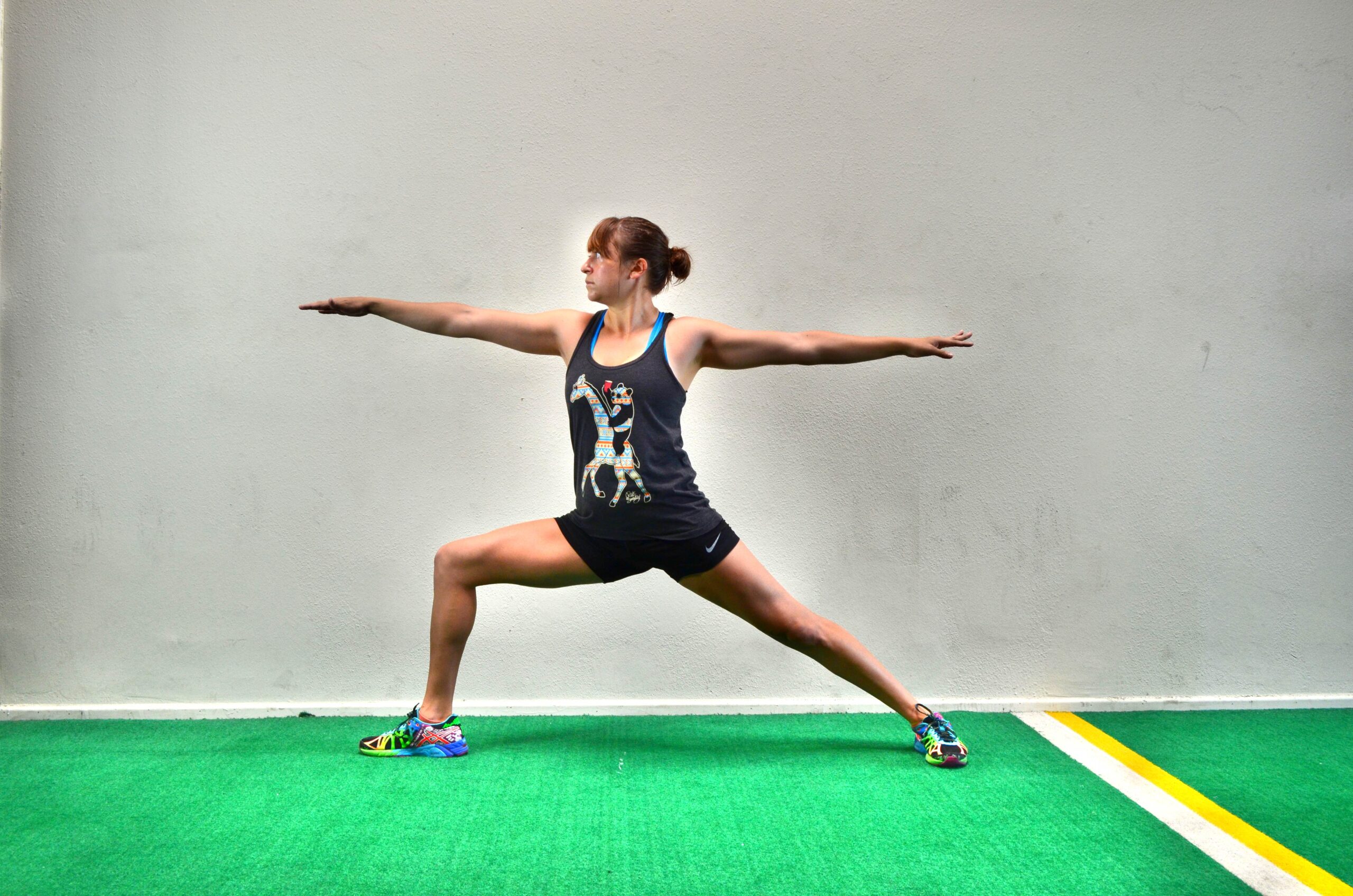
3. Warrior III Hold – Balance on one leg with the knee slightly bent. Hinge over lifting your back leg toward the wall behind you. Lean your torso over, keeping your back flat and your core tight. Reach your hands overhead in front of you. Hold in this position. Do not let your back round or your other foot touch down. Keep your arms in line with your body. You want a nice straight line from the bottom of your lifted heel to the end of your finger tips. Make sure you do not lock the standing leg out as you hold. Beginners may need to reach back toward their foot instead of out in front of them. Using a wall can also help beginners. Stand with a wall behind you and when you hinge over have the lifted foot lightly touch the wall behind you to help you balance.
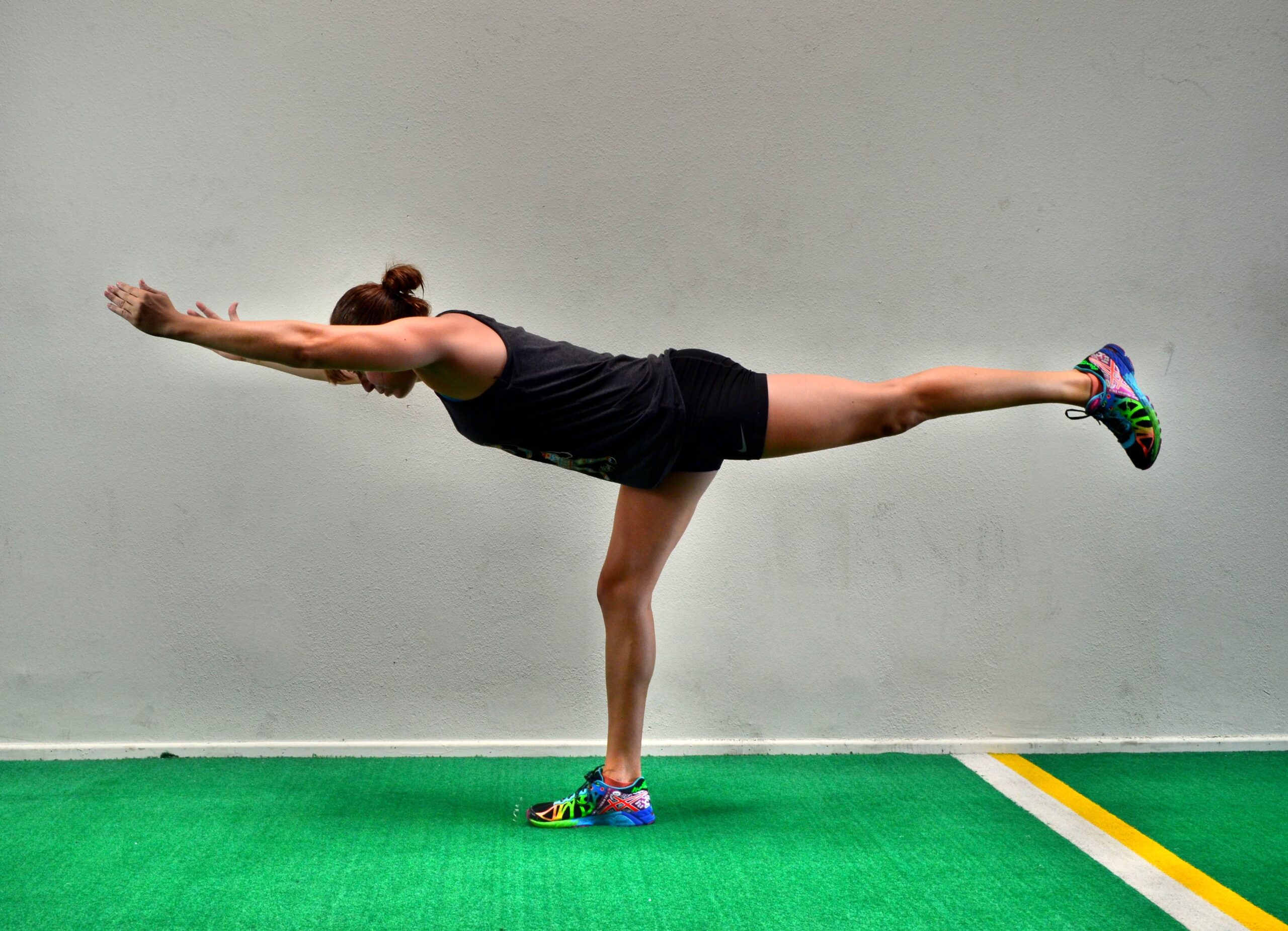
4. Scapular Hold – Stand with your back to the wall. Step a couple of inches away and bend your arms to 90 degrees. Keep your elbows in by your sides and drive them back toward the wall. Do not shrug your shoulders as you drive your elbows back. Then lean onto your elbows on the wall. Do not let your upper arms or back touch the wall. Relax your head back. Pinch your shoulder blades down and back while keeping your core and glutes tight as you lean into the wall. You should feel this move low between your shoulder blades. Keep your body in a nice straight line. Do not let your hips sink toward the wall or your low back arch.To advance the move, move your feet a bit further from the wall.
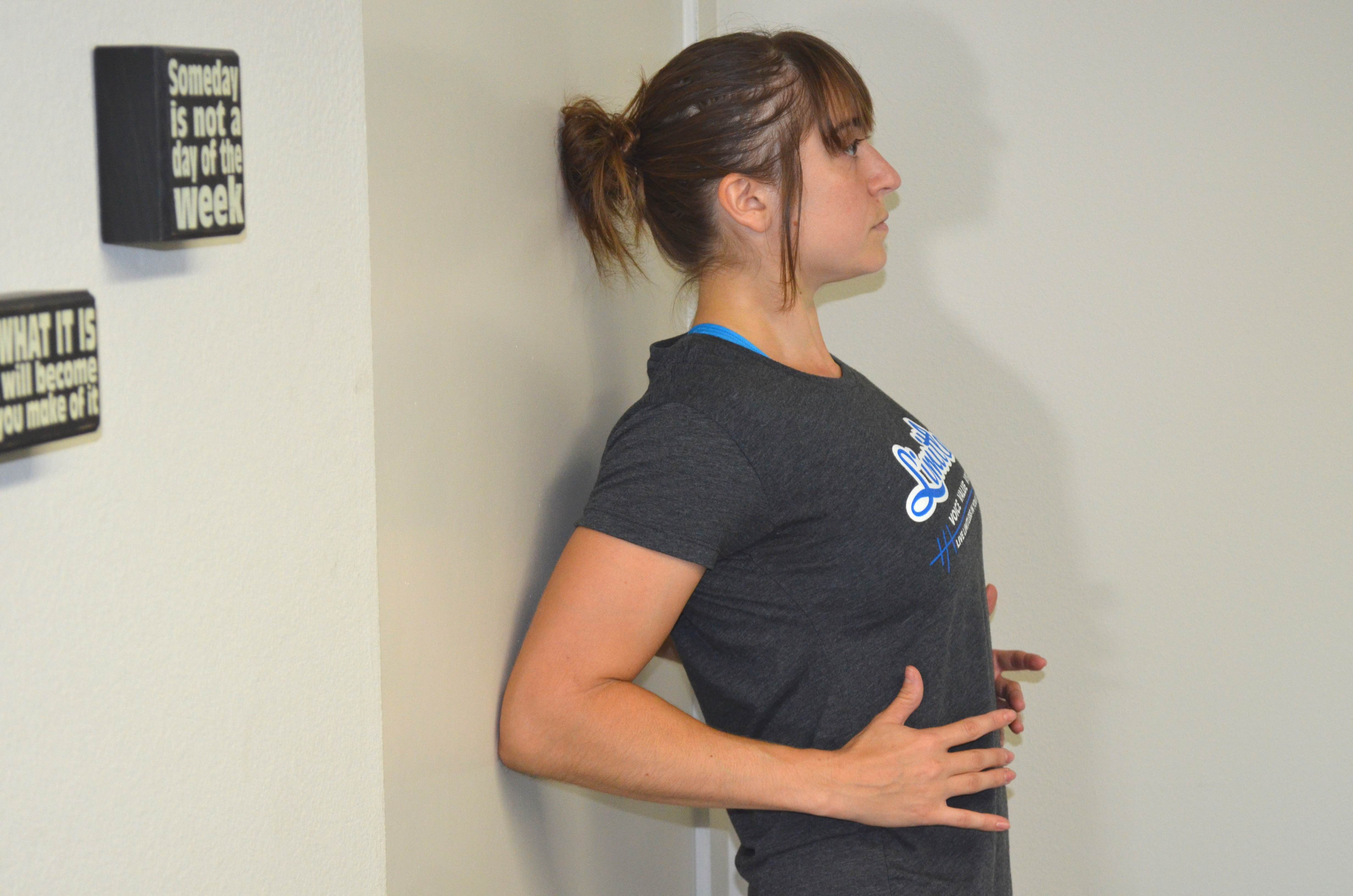
5. Dip Hold – Beginners can do this from a bench while more advanced exercisers can do this off of dip bars or parallel bars. Press up to the top of the dip with arms straight down and shoulder blades drawn down and back. Press your chest out and do not tuck your chin or shrug your shoulders. Maintain a nice tall posture. Your body should hang straight down if on the parallel bars. If you are doing this move off a bench, your hips shouldn’t come up like a posterior plank. You should remain in a seated position with your back and butt close to the bench. Hold at the top of the dip. If you start to shrug, you are done even if the time isn’t up.
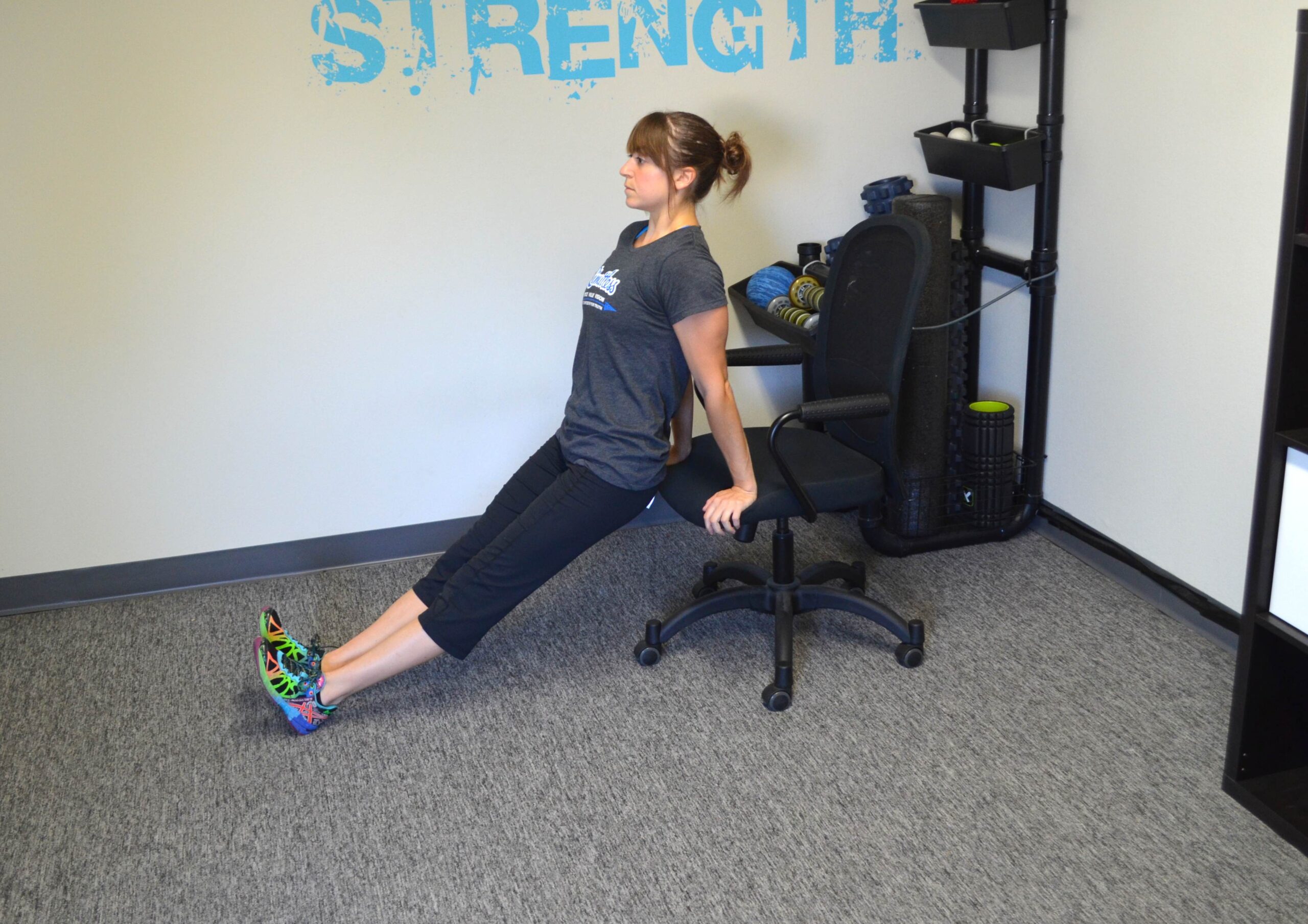
6. Handstand Hold – Beginners will want to do a modified handstand, almost like a downward dog. Set up on your hands and knees. Then push your butt up in the air and drive your chest back toward your knees. Try to get your back as flat as possible, driving your butt up. Do not worry if your legs stay straight. If your hamstrings are tighter, you will definitely need to bend your knees to push your butt up higher and get your back flat. Do not walk your hands in too close to your feet. The most important part is pressing your chest toward your knees so your back stays flat. To advance, you can put your feet up on a table or chair. However, the hardest variation is walking your feet up the wall while getting your hands as close to the wall as possible. The closer and more parallel to the wall you are the harder the hold. Make sure that on each variation, you draw your shoulder blades down and back and draw your belly button in toward your spine. Squeeze your glutes also to keep your low back safe.
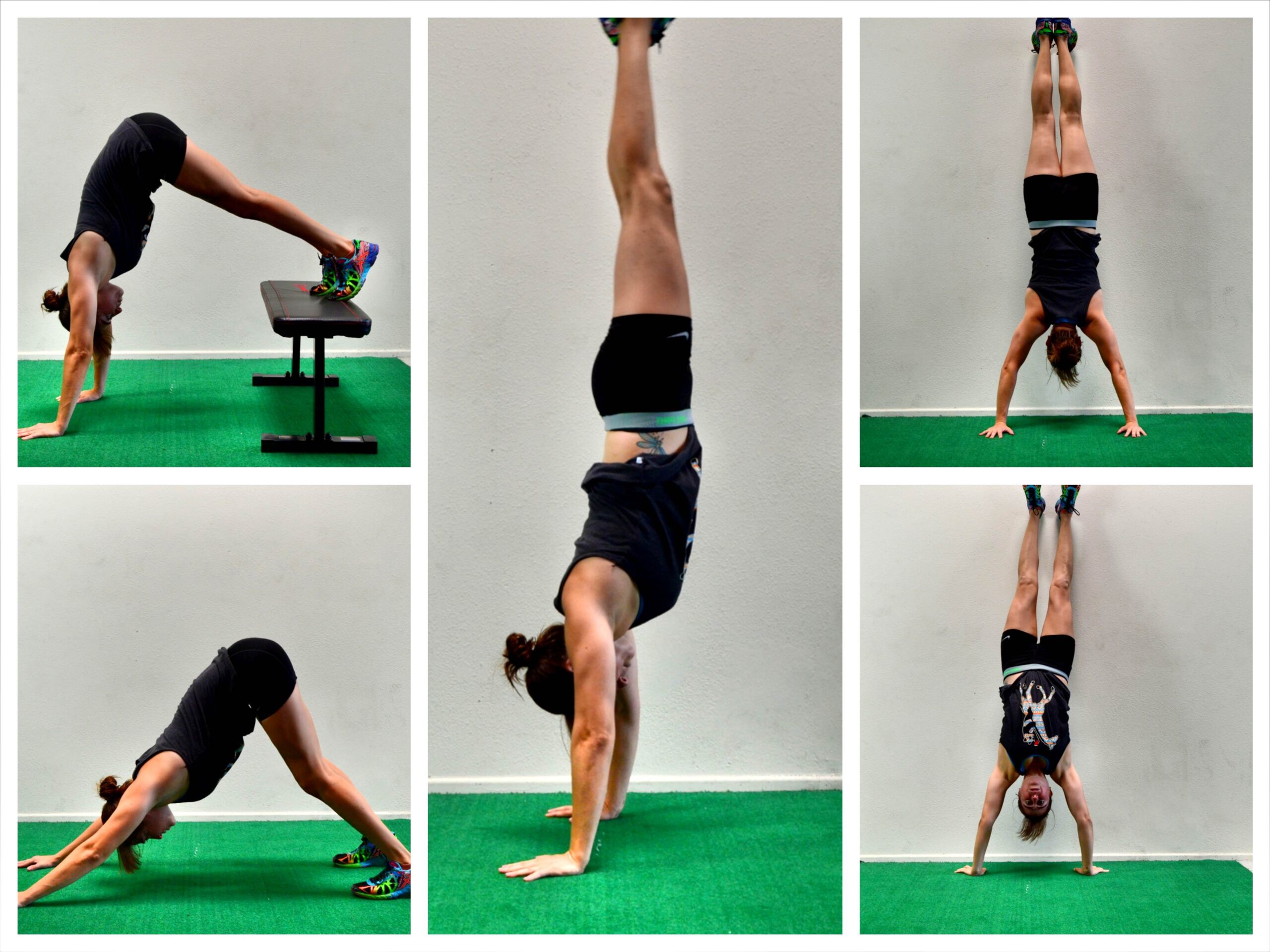
7. High Plank Hold – Set up on your hands and toes (advanced) or hands and knees (beginner). Feet are together and hands are underneath your shoulders. Draw your belly button into your spine and squeeze your quads, glutes and adductors. Your shoulder blades should be down and back and your shoulders shouldn’t be up by your ears. Do not let your upper back round. Keep your head in line with your spine and do not tuck your chin to your chest. If you really draw your belly button in and tilt your pelvic forward, your abs should almost instantly start shaking. You can also do side plank holds as well.
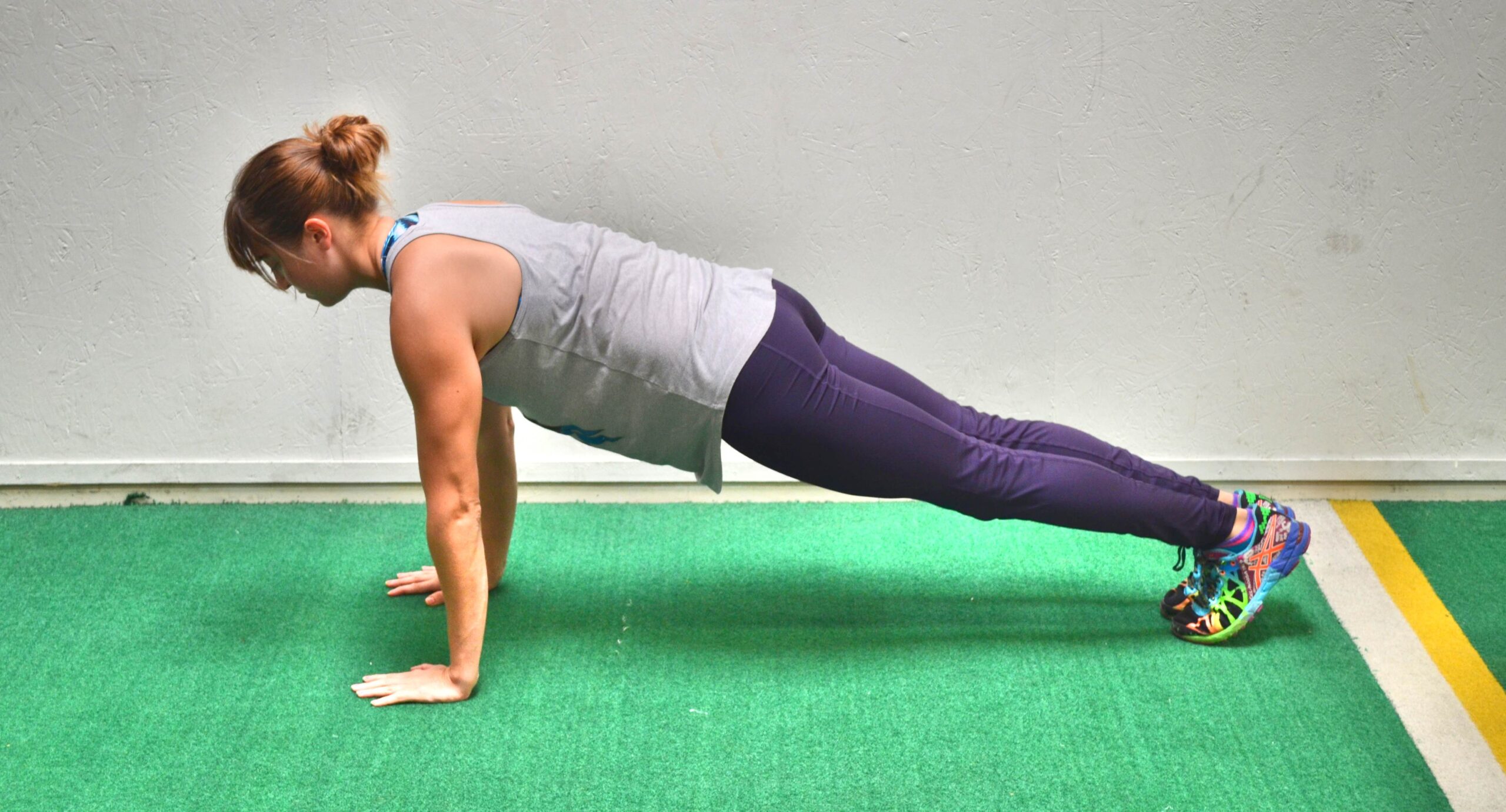
8. Posterior Plank – Start seated on the ground with your legs out straight and your hands on the ground behind your butt. Your finger tips should be pointing toward your butt. Drive through your hands and heels and raise your hips up off the ground toward the ceiling. Press your chest up and out as you raise your hips. Keep your legs straight as you bridge up and relax your head back. Really squeeze your glutes at the top so you don’t feel this in your low back. Beginners may need to bend their legs a bit to hold the bridge at the top. Advanced exercisers can also do single leg posterior planks.
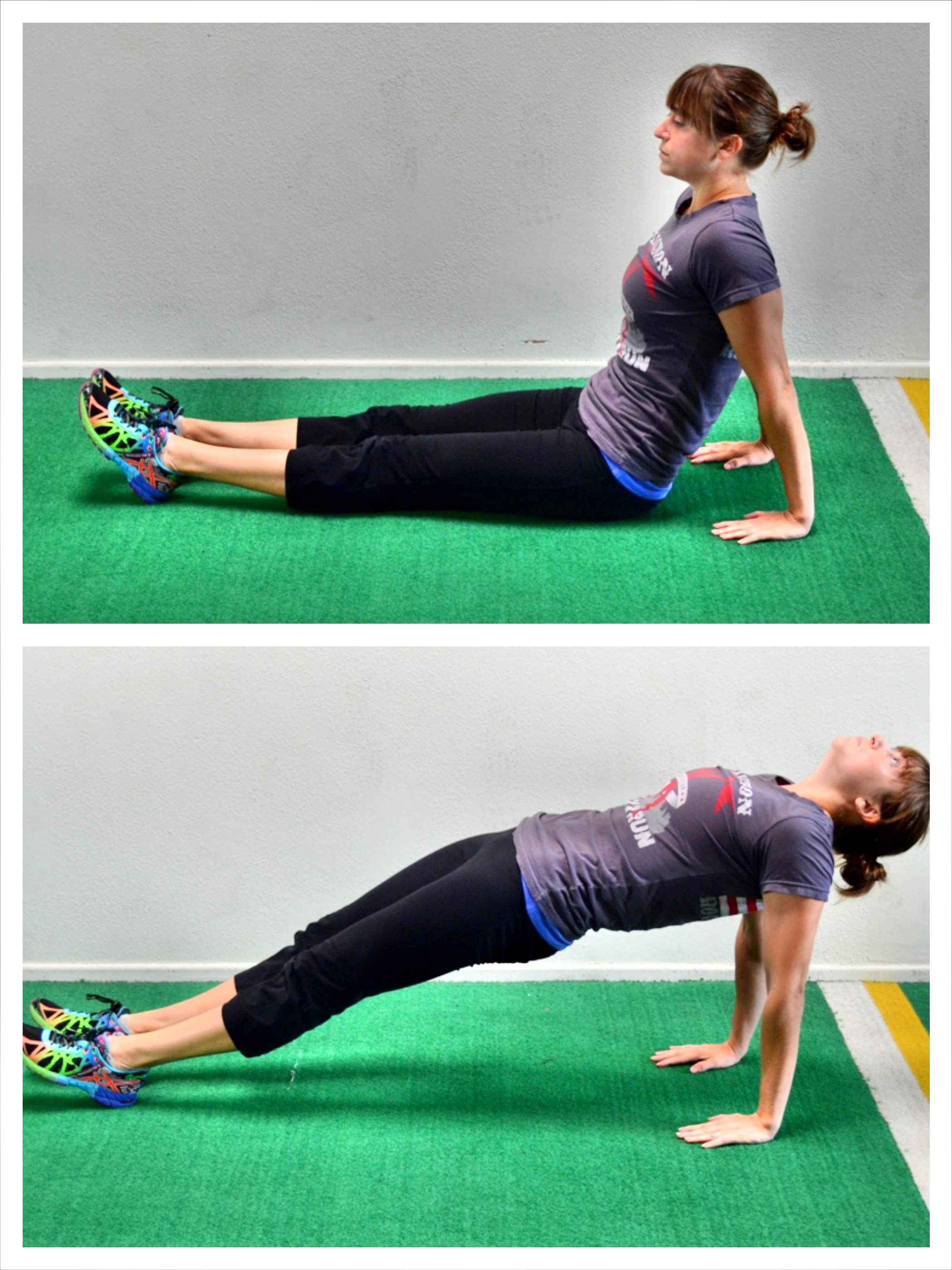
9. Glute Bridge – Lie on your back. Bend your knees and place your feet flat on the ground about hip-width apart. Bring your heels in close enough to your butt that you can touch your heels when you extend your arms down by your sides. Then bend your arms to 90 degrees with only your forearms on the ground. Drive up through your heels, lifting your glutes up as high off the ground as you can. Squeeze your butt and keep your core tight. Do not hyperextend your low back. Also make sure your knees do not fall open and you are not pushing yourself backward. You want to drive straight up. Beginners will want to stick with a two-leg glute bridge while more advanced exercisers will want to progress to a single leg glute bridge.
10. Pelvic Tilt Hold – Lie on your back with your knees bent and your feet flat on the ground. You should almost be able to reach your hands down by your sides and touch your heels with your finger tips. Feel the space between your low back and the ground as you lie there. Then draw your belly button in toward your spine and press that space away. You should feel your low back against the ground. Hold there, making sure to not hold your breath.

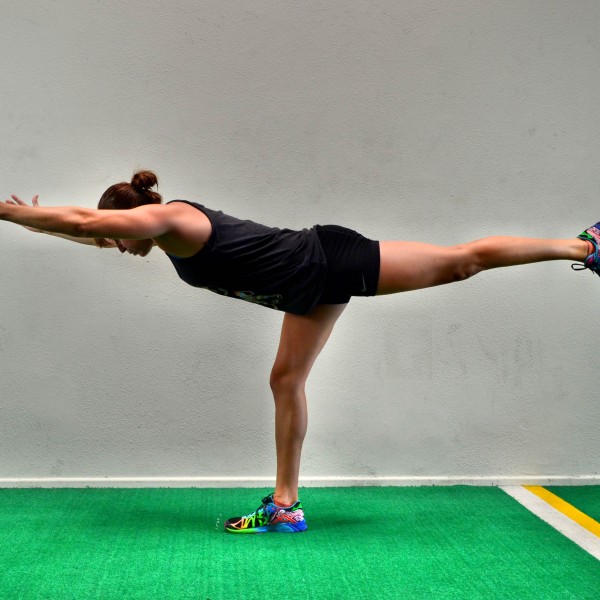



Trackbacks/Pingbacks